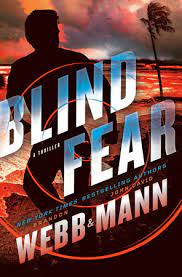In the James Brooks film As Good As It Gets, a star-struck fan asks the misanthropic romance novelist Melvin Udall (Jack Nicholson), “How do you write women so well?”
“I think of a man,” says Melvin, “and I take away reason and accountability.”
Yes, it’s a hilariously horrible answer. But it’s also a great question. How do you write characters that feel real? That are real?
You know the usual formulas. You’ve studied them in workshops, heard them on podcasts. “Give them weaknesses. Vulnerabilities. Come up with distinctive characteristics, quirks and eccentricities. Develop a backstory.”
Aspiring novelists are taught to build a profile for their protagonist. Detail your character’s childhood, their first crush, most painful memories, favorite color (“blue—no, yellow!”). And to an extent, I guess that works. As Steve Martin writes in Pure Drivel, “Liven your character by giving him an adjective: ‘This guy was no ordinary guy, he was a red guy.’ Now he is a full-blown person, with hopes and dreams.”
But to me this can feel more like assembling a Mr. Potato Head than describing a living, breathing person.
That’s not where the magic happens.
What if, instead of setting out to assign your character certain traits, hopes, fear, and dreams, you assume they already have them? And your job is to simply listen . . . with your pen moving. Find them. Learn them, the way you get to know real breathing, bleeding people in your life. The way you came to know your spouse, your partner, your best friend.
What if writing a character is not so much a question of invention as it is one of empathy?
Stephen King famously says he thinks of stories as “found objects,” already-existing artifacts, and that your task is not to build them but to excavate them, gently enough and skillfully enough so as not to break them in the process.
What if characters are the same way? You don’t invent them. You discover them.
On a recent podcast James Altucher asked me the Melvin Udall question: “How do you write characters that feel so real?” I heard myself reply, “You write them until you fall in love with them.”
Saul Goodman, the hapless lawyer, was meant to be a walk-on part in Breaking Bad, an ad hoc bit player put in to provide a little comic relief in an episode or two. Nobody—not the actor, not the studio, not even the show’s creator—had a clue what was about to happen. Which was that the character would grow to such an outsized role that he won everyone’s hearts, then spun off an entirely new show that equaled (some say even surpassed) the original.
Something like the Saul Goodman effect happened in Stephen King’s Bill Hodges trilogy. King started the first book, Mr. Mercedes, as a short story brief cast included a minor character named Holly. But the story turned into a novel, and Holly turned into a star.
Holly Gibney is a curious one. Pathologically shy. Preternaturally sensitive, even psychic, her unique interior world shaded by Shining-like perceptions. And stubbornly brave when it counts.
“I could never let Holly Gibney go,” King has noted. “She was supposed to be a walk-on character in Mr. Mercedes and she just kind of stole the book and stole my heart.”
Holly not only bloomed into a central character who stole the show: like Saul Goodman, she even survived the main character (in his case, Walter White, in hers, Bill Hodges) to headline a show of her own. This September, in a post-Hodges world, a new sequel is coming out. The title? Holly.
There is a Holly in the Jack Reacher world, too.
On a recent podcast, Lee Child was asked if he had any favorite characters in his books, aside from Reacher himself. And I already knew what his answer would be. Frances Neagley.
Neagley and Reacher have a connection so deep, so strong, it transcends any storytelling romance tropes. Neagley is afflicted with haphephobia, a horror of being touched, which Reacher respects without explanation or reservation. In fact, he respects Neagley unreservedly in every way. As does Child, clearly. She is Reacher’s only true friend, the only person from his past he stays connected to, and the only other recurring character in the series.
There are obvious parallels between Neagley and Holly Gibney—their distinctive psychological conditions, their gutsy resourcefulness, their inclination towards social withdrawal that makes them such compellingly rootable underdogs. But none of that is important compared to this trait they share: their authors have fallen head over heels in love with them.
And here’s the thing: it didn’t start out that way. This is what is so fantastic about it, what makes readers and fans like you and me so incredibly fortunate: we get to watch those relationships spark to life and grow, building from casual acquaintance to budding respect to full-on gonzo infatuation.
As we turn the pages, we get to watch the authors fall in love.
I know what that’s like. It’s happened to me, too.
In the second Chief Finn thriller, Cold Fear (coauthored with my Navy SEAL buddy Brandon Webb), I needed the cast to include an Icelandic cop. Krista Kristjánsdóttir showed up on page 11 and took control—of the plot, the book, and the writer. She cursed like a mobster. Hated America but secretly loved American crime fiction. As a kid, she’d waited out a terrible storm sitting at a window with her grandfather as they both watched her parents’ fishing boat sink. None of which I had the slightest inkling of when I started writing her. She was just a cop, put there to ramp up the pressure on Finn.
And she stole the show. Booklist called Krista “a compelling character in her own right.” Best Thriller Books described her as “a formidable and brilliant woman . . . one of the top female characters I’ve read recently.” Publisher’s Weekly suggested she was “strong enough to sustain her own series.” Krista had Holly Gibney’ed me.
Something like that happened again with the latest Finn book, Blind Fear. The story opens with two young kids, swimming off the beach in Vieques and disappearing. They were supposed to be a plot device, two little living MacGuffins that set Finn on a search-and-rescue quest. But as the words kept showing up on the page, something happened: Finn fell in love with these two children. And so did I.
The more I listen to other authors talk about their work, the more I realize what a common experience this is.
In his latest novel, Small Mercies, Dennis Lehane tells the story of Mary Pat, a working class Boston mom struggling to find a lost daughter amid the city’s school busing battles of the 1970s. Two cops enter the story in chapter 8. According to Lehane, that was supposed to be the end of it: they show up, ask questions, and leave.
But that’s not what happens.
One of those detectives, Bobby Coyne, comes back again. And again. He keeps showing up, looking closer into Mary Pat’s situation—and into the heart of the story. Bobby Coyne becomes a character second only to Mary Pat herself, serving as a Greek chorus of sorts, a proxy commentator for the author, and arguably the moral center of the novel.
It wasn’t Lehane’s plan. Not until he started getting to really know Bobby Coyne.
I had a chance to ask one of my favorite authors, Robert Crais, about this. A legendary television writer (Miami Vice, Cagney & Lacey), Crais is the award-winning creator of the Elvis Cole/Joe Pike novels. His die-hard fans (“Craisies”) are craisy about Elvis, but they go all-out nuts for his sidekick, the taciturn, terrifying Joe Pike.
I wondered if Crais had originally intended Joe to play such a prominent role, and wasn’t surprised at his answer.
“I knew I wanted a buddy approach,” he said, “so I concentrated first on Elvis, my main character, then set about creating his opposite—Elvis talks, Joe doesn’t; Elvis has overcome the hard things he’s endured, Joe has withdrawn from the world.”
And then he dropped this bomb:
“Also, I fully planned to kill Joe Pike at the end of the first book.”
Say what?!
“When I reached the death scene,” he added, “I couldn’t do it. I had fallen in love with the character by then. He was simply too much fun to write.”
Joe Pike was supposed to die in book 1. So, by the way, was Donald Westlake’s iconic antihero Parker. Lee Child fully intended for Jack Reacher to die in book 24. Holly Gibney was supposed to behave herself and disappear. Saul Goodman was put there to give us a few laughs and then go quietly away.
But the authors fell in love. And thank God. Because now we get to fall in love, too.
***


















